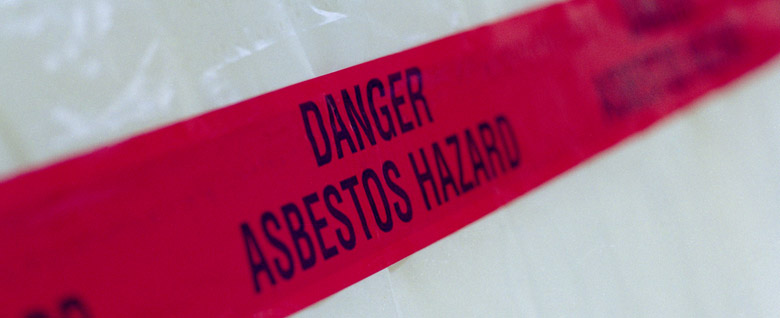1st to 7th April 2024 is Global Asbestos Awareness Week, and this article gives a brief overview of what you can do if you feel that you have been exposed to asbestos during your working life and what your employer is required to do to protect you from exposure.
Asbestos was banned in the UK in 1999 however this dangerous substance can still be found in any building built or renovated prior to the ban. It is estimated that thousands, if not millions, of buildings in the UK built between the 1950s and 1970s still are likely to include asbestos.
Asbestos has no smell, and does not settle like dust on your clothing. If it is left alone, it does not cause a danger, however if disturbed, such as drilled into or cut, then tiny fibres are released which, if breathed in, can cause cancer and lung disease. Five thousand people a year die from past exposure to asbestos and there is no cure for asbestos related diseases once they have developed. If you are self-employed you are responsible for making sure that you are not exposed to asbestos when undertaking work.
Employer's responsibilities
If you work in a role where you could potentially disturb the fabric of a building, particularly those built during the 50s to 70s, your employer must provide you with asbestos awareness training – although this does not mean that you are then okay to work in an asbestos-filled environment. They must check when the building was built or refurbished. They should get a copy of the current build asbestos register and ensure that they, and any workers, fully understand the information contained in the register. The job should be carefully planned to avoid disturbing asbestos. Your employer can also check if a survey has been done to locate asbestos in a building although a survey may not always find asbestos hidden in the fabric of a building. A proper risk assessment must be undertaken by someone competent and trained to carry out this task.
What if asbestos is located in your workplace?
Appropriate controls should be put into place by your employer and a decision needs to be made as to whether the job that needs to be done can be done without disturbing the asbestos. Only properly trained staff should work in areas where there may be asbestos and warning signs need to be put into place so that people know not to enter the area if asbestos is found.
Appropriate PPE will need to be worn and a proper cleaning and decontamination process needs to be followed. Any clothing or materials which may contain asbestos fibres need to be disposed of as contaminated waste.
It will likely be necessary to have a sample of the material analysed. The risk needs to be assessed and if the material is found to be a lower risk, this can be worked around, if a proper risk assessment is carried out, if the right controls are in place, and if training is provided for non-licensable work.
If it is necessary to hire a licensed contractor to remove or make safe the asbestos, then your employer will need to organise this. The specialist contractors are usually licensed by the Health and Safety Executive to carry out this type of work.
What should I do if I have been exposed to asbestos?
- If you have been exposed to asbestos, you should immediately wash your body, hair and clothes. Immediate and thorough washing will help to limit any exposure to the fibres.
- Speak with your employer and supervisor – if you have concerns and you have not had any training to work in an environment where there might be asbestos, then your employer must make a plan in respect of your working conditions.
- Report any exposure to the Health and Safety Executive.
- Speak with your GP or a medical professional, describe your exposure, and seek advice.
- Gather information in the event that you may wish to make a claim. You will usually have three years from the date that you were diagnosed with a work-related asbestos condition to make a claim. This is known as the “date of knowledge”.
- Often asbestos exposure does not cause symptoms until years after the exposure so the three year limitation period will only start to run from the date you are diagnosed with a recognised condition as a result of the exposure.
If you have been diagnosed with an asbesots-related illness due to the negligence of your employer or former employer you may be eligible to claim compensation. Call our specialist industrial disease solicitors for free initial guidance on your options on 0161 696 6235




Comments